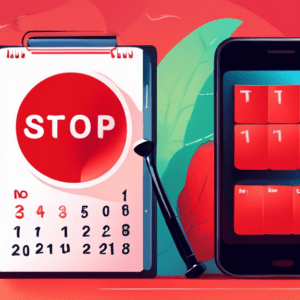Procrastination. We’ve all been there. That looming deadline, the task list growing longer by the minute, and yet, you find yourself inexplicably drawn to the siren call of social media, the allure of a messy drawer that suddenly needs organizing, or the irresistible urge to alphabetize your spice rack. Anything but the task at hand.
You’re not alone. Procrastination is a universal human experience, and in our fast-paced, always-connected world, it’s easier than ever to fall prey to its seductive grasp. But before you download the latest productivity app promising to magically transform you into a time-management guru, there’s something crucial you need to understand:
It’s Not About Willpower (It’s About Emotions)
We often beat ourselves up for procrastinating, assuming it’s a simple lack of willpower or discipline. But the truth is far more complex and, thankfully, far more manageable. Procrastination, at its core, is an emotional response. We put things off not because we’re lazy, but because we’re trying to avoid negative feelings.
Think about it:
- That complex work project might trigger feelings of overwhelm or inadequacy.
- Starting your taxes could evoke anxiety about finances.
- Even writing that important email might dredge up fear of rejection or conflict.
Our brains, wired for self-preservation, seek to protect us from these uncomfortable emotions. And what’s the easiest way to avoid them? Procrastination. By putting off the task, we get temporary relief from the negative feelings, but at a cost – increased stress, guilt, and often, a last-minute scramble to meet the deadline.
Breaking the Procrastination Cycle: Understanding Your Why
The key to overcoming procrastination isn’t to simply try harder or rely solely on an app. It’s about understanding the underlying emotions driving your procrastination and developing strategies to address them head-on. Here’s where self-reflection becomes your greatest ally:
1. Identify Your Procrastination Patterns:
Take some time to analyze your procrastination habits.
- What types of tasks do you tend to put off?
- Are there specific times of day when you’re most prone to procrastination?
- What are your go-to procrastination activities?
Recognizing these patterns will help you pinpoint potential emotional triggers.
2. Uncover the Emotional Root:
Once you’ve identified your procrastination patterns, dig deeper to understand the emotions at play. Ask yourself:
- How do I feel when I think about starting this task?
- What am I afraid of?
- What’s the worst-case scenario in my mind, and how likely is it to actually happen?
Often, simply acknowledging and labeling these emotions can lessen their grip on you.
3. Challenge Negative Thoughts:
Procrastination thrives on negative self-talk. I’ll never get this done, I’m not good enough, This is going to be a disaster – these thoughts become self-fulfilling prophecies. Challenge these thoughts with evidence.
- Have you successfully completed similar tasks in the past?
- What are your strengths?
- What’s a more realistic and positive outcome?
Reframing your thinking can significantly reduce the anxiety fueling your procrastination.
Introducing the App: Your Partner in Fighting Procrastination
Now, for the moment you’ve been waiting for. While no app can single-handedly conquer your procrastination (remember, it’s an emotional battle!), the right app can be an incredibly powerful tool to support your journey. The key is to choose an app that aligns with your specific needs and procrastination style. Here are some popular categories and features to consider:
1. Task Management Apps:
These apps help you break down large, overwhelming projects into smaller, more manageable tasks.
- **Features to look for:** Subtasks, deadlines, progress tracking, collaboration tools (if working on a team)
- **Popular options:** Todoist, Asana, Trello
2. Time Blocking Apps:
If you struggle with distractions and time management, these apps allow you to schedule specific blocks of time for different tasks, reducing the likelihood of procrastination.
- **Features to look for:** Customizable time blocks, visual schedule, integration with calendars
- **Popular options:** Google Calendar, Clockify, FocusTime
3. Focus Apps:
These apps help you minimize digital distractions by temporarily blocking access to websites and apps that tend to lead you astray.
- **Features to look for:** Customizable block lists, focus timer, progress tracking, whitelist options for essential websites
- **Popular options:** Freedom, Forest, StayFocused
4. Habit Tracking Apps:
Building positive habits can be a powerful antidote to procrastination. These apps allow you to track your progress on goals, providing a visual reminder of your accomplishments and motivating you to stay on track.
- **Features to look for:** Goal setting, customizable tracking, reminders, progress visualizations
- **Popular options:** Habitica, Strides, Loop Habit Tracker
Using the App Effectively: Tips for Success
Downloading an app is just the first step. To truly harness its power, consider these tips:
1. Start Small:
Don’t try to overhaul your entire routine overnight. Choose one feature or technique to focus on at a time, gradually incorporating more as you become comfortable.
2. Be Consistent:
The key to any productivity tool is consistent use. Make using the app a non-negotiable part of your daily routine. Set reminders if needed.
3. Review and Adjust:
Regularly review your progress and how the app is working for you. Don’t be afraid to experiment with different features, settings, or even switch to a different app altogether if it’s not meeting your needs.
Remember: It’s a Journey, Not a Sprint
Overcoming procrastination is an ongoing process, not a destination. There will be days when you succumb to its allure, and that’s okay. Don’t let setbacks discourage you. The most important thing is to approach the journey with self-compassion, a willingness to understand the emotions driving your procrastination, and a toolbox of strategies and tools to help you stay on track. Remember, you’ve got this!
